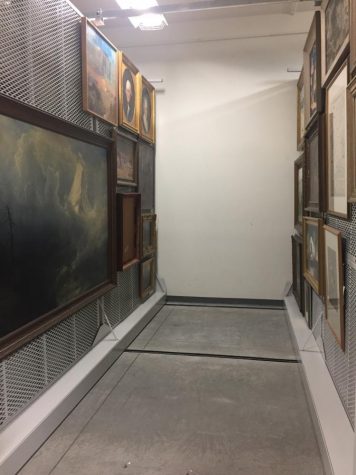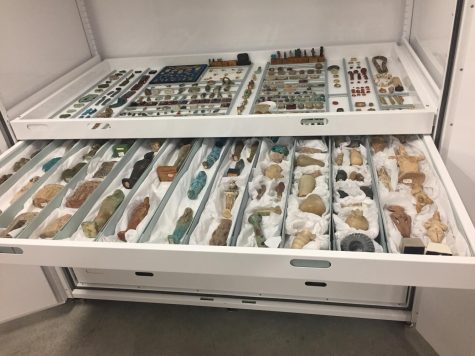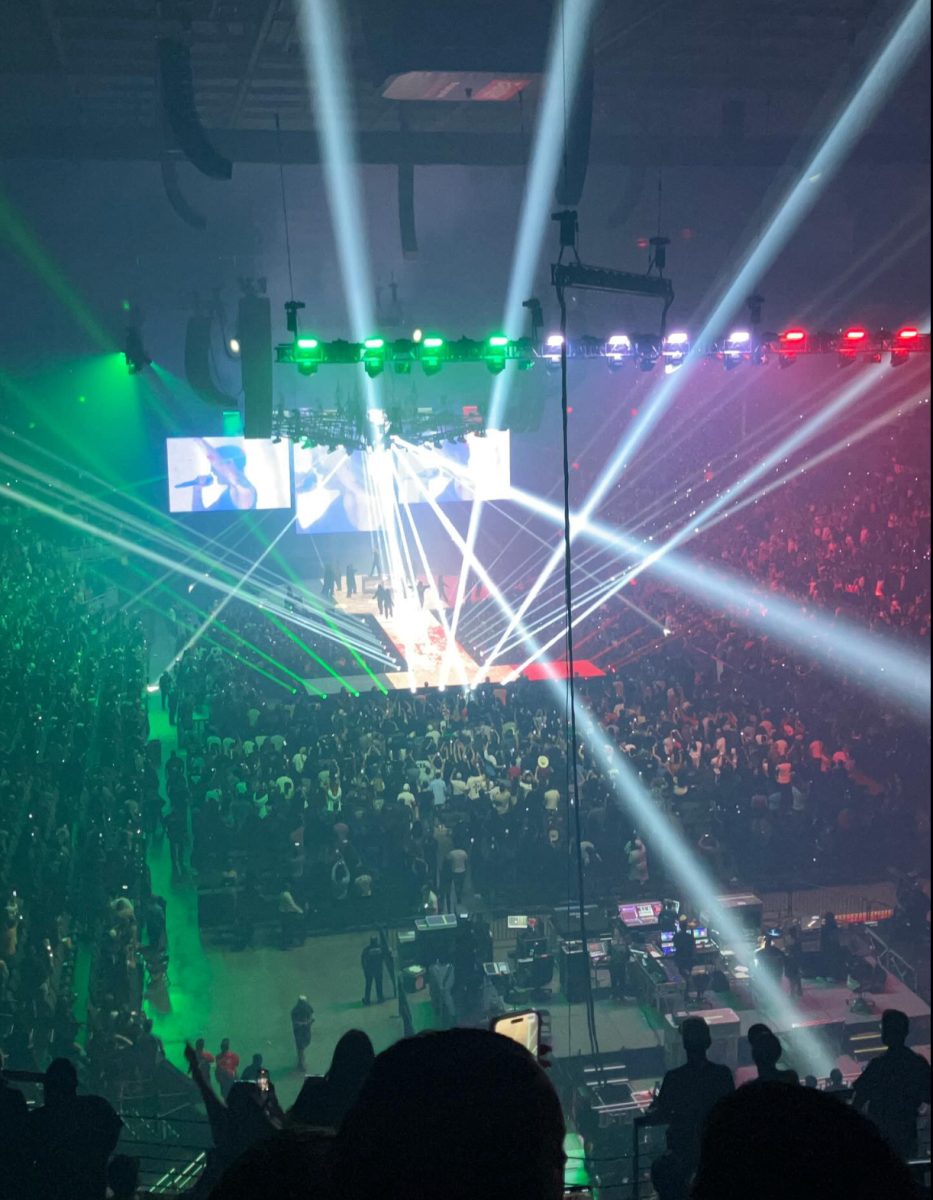Joslyn Museum artifacts displayed after several years in storage
October 6, 2017
Over 180,000 people visit the Joslyn each year, but these visitors only see a fraction of the Joslyn’s total collection. With over 12,000 works in their collection, the Joslyn cycles through countless artworks.
While off display, works are carefully stored. Over 60 percent of the museum is dedicated to their storage to make sure they are properly taken care of. Two-dimensional works are stored in specific areas and conditions to help preserve them.
“We try to display paper works for six months at a time,”Chief Curator Toby Jurovics said. “After six months on display, we try to give our works five years off. This helps keep the paintings looking their best.”
While in storage, these pieces are hung in a room with restricted access. Routine touch ups are completed on some older artworks while they’re off display to keep them in top condition.
“We replace and repair the frames before they’re put back on display,” Jurovics said. “It helps prevent aging on the works.”
Sculptures and other three-dimensional works are stored in a separate area from flatworks. These objects are stored on shelves that are sorted for easy access.
“Our three-dimensional storage is loosely organized by the era of art,” Jurovics said. “We try to have a wide range of works, from ancient Egyptian works to contemporary pieces.”
While off display, both flat and three-dimensional works are cared for very precisely in storage.
“Our storage is both temperature and humidity controlled,” said Jurovics. “It’s important to keep these variables consistent because sharp changes can prematurely age paintings, which hurts their appearance to the public.”
Other works are loaned out to museums across the country. On average, ten pieces are loaned out from the Joslyn at a time. These pieces usually are on loan for about six months at a time.
Pieces are also taken off display because the collections shift based on the curator’s vision for a gallery. With around 15 galleries, the countless options allow for curators to pick and choose the pieces they feel works best.
“Pieces are somewhat phased in and out of collections as the curator’s ideas shift,” Jurovic said.
Despite the momentous amount of space available for storage, these spaces are constantly being filled as more works are acquired. On average, 20 pieces are added to Joslyn’s already-large collection each year.
“That’s the one thing that museums always wish for, more storage space,” Jurovics said.
















